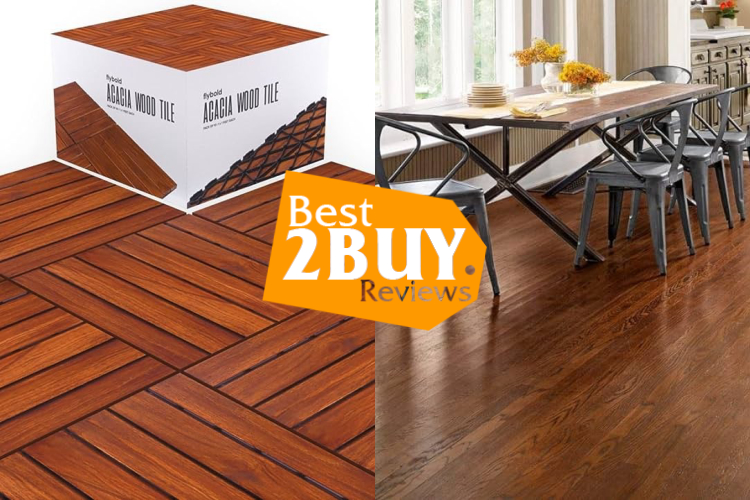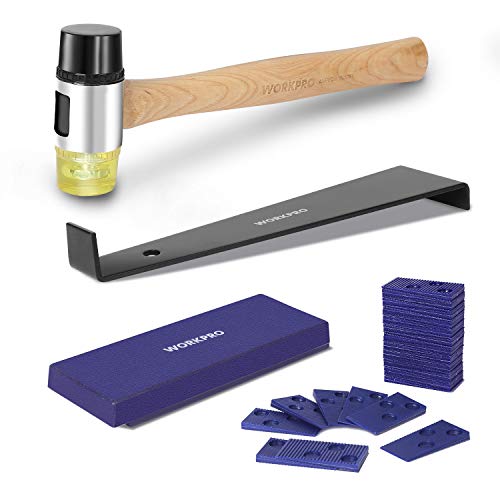Hi my friends! I’m Maria Rodriguez from best2buy.reviews. Today, I'm excited to share some tip for choosing Wood Flooring to help you make a confident choice. Let's explore!
- 1. Types of Wood Flooring
- 2. Why should use Wood Flooring?
- 2.1. Timeless Aesthetic Appeal
- 2.2. Durability
- 2.3. Increased Property Value
- 2.4. Easy Maintenance
- 2.5. Variety of Styles and Species
- 2.6. Comfort and Warmth
- 2.7. Environmentally Friendly Options
- 2.8. Versatility
- 2.9. Hypoallergenic
- 2.10. Customization
- 2.11. Longevity
- 2.12. Natural Insulation
- 3. How to choose Wood Flooring?
- 3.1. Determine Your Budget:
- 3.2. Consider the Location:
- 3.3. Choose the Type of Wood:
- 3.4. Select the Construction Type:
- 3.5. Choose the Finish:
- 3.6. Think About Grade and Appearance:
- 3.7. Decide on Plank Width and Installation Pattern:
- 3.8. Evaluate Sustainability:
- 3.9. Test Samples:
- 3.10. Consult with Professionals:
- 3.11. Consider Maintenance:
- 3.12. Read Warranties and Installation Guidelines:
- 3.13. Get Quotes and Compare:
- 3.14. Finalize Your Choice:
- 4. In conclusion
Types of Wood Flooring
Solid Hardwood Flooring:
- Description: Solid hardwood flooring is made from a single piece of wood and is available in various species, including oak, maple, cherry, walnut, and more.
- Advantages: It's durable and can be sanded and refinished multiple times, allowing for a long lifespan. It offers a classic, timeless look and adds value to homes.
- Considerations: It's sensitive to moisture and temperature changes, so it may not be suitable for basements or high-humidity environments.
Engineered Wood Flooring:
- Description: Engineered wood flooring consists of a real wood veneer layer bonded to multiple layers of plywood or high-density fiberboard. The layers are cross-directionally stacked for stability.
- Advantages: It's more resistant to moisture and temperature fluctuations than solid wood, making it suitable for a wider range of environments. It can be less expensive than solid wood.
- Considerations: The top veneer layer can typically be sanded and refinished a limited number of times, depending on its thickness.
Bamboo Flooring:
- Description: Bamboo flooring is made from bamboo grass, which is highly renewable. It comes in both solid and engineered forms and offers a unique, contemporary look.
- Advantages: It's an eco-friendly option, as bamboo grows rapidly. It's durable and resistant to moisture and pests. It has a distinct grain pattern and is available in various colors.
- Considerations: The quality of bamboo flooring can vary, so it's important to choose a reputable supplier.
Cork Flooring:
- Description: Cork flooring is made from the bark of cork oak trees. It has a distinctive appearance and is soft underfoot.
- Advantages: It's a sustainable option, as cork is harvested without cutting down the tree. It's naturally insulating, resistant to moisture, and provides a comfortable surface to walk on.
- Considerations: Cork flooring can be susceptible to scratches and dents, so proper care is essential. It may not be the best choice for areas with heavy furniture.
Reclaimed Wood Flooring:
- Description: Reclaimed wood flooring is made from salvaged wood, often from old buildings, barns, or other structures. It provides a rustic, weathered appearance.
- Advantages: It's environmentally friendly, as it repurposes existing wood. It has character and history, and each plank can be unique.
- Considerations: Reclaimed wood can be more expensive and may require extra preparation due to its age and condition.
Exotic Wood Flooring:
- Description: Exotic wood flooring includes species not commonly found in domestic wood flooring, such as Brazilian cherry, teak, or mahogany. These woods offer unique colors and grain patterns.
- Advantages: Exotic woods can add a distinct and luxurious look to your space. They are often very hard and durable.
- Considerations: Exotic woods can be more expensive and may require specialized maintenance products.
Distressed or Hand-Scraped Wood Flooring:
- Description: This type of flooring is intentionally aged or distressed to give it a weathered or vintage appearance.
- Advantages: It adds character and a lived-in feel to a space. Scratches and imperfections are less noticeable.
- Considerations: It may not be suitable for all design aesthetics, and the level of distressing can vary.

Why should use Wood Flooring?
Timeless Aesthetic Appeal
Wood flooring has a classic and timeless look that complements various interior design styles, from traditional to contemporary. Its natural beauty and warmth can enhance the visual appeal of any room.
Durability
High-quality wood flooring, particularly solid hardwood, is exceptionally durable and can last for generations when properly maintained. It can withstand heavy foot traffic and resist wear and tear over the years.
Increased Property Value
Installing wood flooring can increase the resale value of your home or property. Many homebuyers are willing to pay a premium for homes with hardwood floors due to their durability and aesthetic appeal.
Easy Maintenance
Wood flooring is relatively easy to clean and maintain. Regular sweeping and occasional mopping are usually sufficient to keep it looking its best. Additionally, wood floors can be refinished to remove scratches and refresh their appearance.
Variety of Styles and Species
Wood flooring comes in a wide range of wood species, finishes, and styles. Whether you prefer the rich tones of oak, the deep hues of walnut, or the exotic patterns of bamboo, you can find a wood flooring option that suits your taste and interior decor.
Comfort and Warmth
Wood flooring provides a comfortable and warm surface to walk on, which is especially appreciated in areas where you often walk barefoot. It also works well with underfloor heating systems.
Environmentally Friendly Options
Some wood flooring products, such as bamboo and reclaimed wood, are environmentally friendly choices because they are sustainable or repurpose existing materials.
Versatility
Wood flooring can be installed in various settings, including living rooms, bedrooms, kitchens, and even bathrooms. Engineered wood, in particular, is suitable for basements and areas with fluctuating humidity levels.
Hypoallergenic
Wood flooring is hypoallergenic, as it doesn't trap dust, pollen, or allergens like carpeting can. This makes it an excellent choice for individuals with allergies or respiratory sensitivities.
Customization
Wood flooring can be customized to your preferences. You can choose different plank widths, finishes, and installation patterns (e.g., herringbone or chevron) to create a unique and personalized look.
Longevity
Well-maintained wood flooring can last for decades, making it a cost-effective flooring option in the long run.
Natural Insulation
Wood is a natural insulator, helping to maintain a comfortable indoor temperature and potentially reducing energy costs.
How to choose Wood Flooring?
Here's a step-by-step guide on how to choose wood flooring:
Determine Your Budget:
Determine how much you're willing to spend on wood flooring, including materials and installation. Keep in mind that different wood species, grades, and finishes can vary in price.
Consider the Location:
Determine where you plan to install the wood flooring. Different areas of your home or commercial space may have different requirements. For example, solid hardwood may not be suitable for basements or high-moisture areas.
Choose the Type of Wood:
Select a wood species based on your aesthetic preferences and the wood's hardness and durability. Common species include oak, maple, cherry, walnut, and hickory. Exotic woods like Brazilian cherry or teak offer unique appearances but can be more expensive.
Select the Construction Type:
Decide between solid hardwood and engineered wood. Consider factors like moisture resistance, installation method, and budget. Engineered wood is often a good choice for areas prone to moisture or for those who prefer a more cost-effective option.
Choose the Finish:
Wood flooring comes with various finishes, including glossy, semi-gloss, satin, and matte. Consider the look you want and how well it will suit your space and lifestyle. Matte finishes, for example, are less likely to show scratches and wear.
Think About Grade and Appearance:
Wood flooring is categorized into grades based on the appearance of the wood. Options may include Select, No. 1 Common, No. 2 Common, and Clear. Choose a grade that matches your aesthetic preferences, considering factors like knots, color variations, and grain patterns.
Decide on Plank Width and Installation Pattern:
Consider the width of the planks and whether you want a standard, wide-plank, or even parquet pattern. The installation pattern can significantly impact the overall look of the flooring.
Evaluate Sustainability:
If environmental sustainability is a concern, look for wood flooring that is certified by organizations like the Forest Stewardship Council (FSC) to ensure responsible sourcing and forestry practices.
Test Samples:
Obtain samples of your chosen wood species and finish to see how they look in your space. Assess how they complement your existing decor, furniture, and lighting.
Consult with Professionals:
Seek advice from flooring professionals or interior designers. They can provide valuable insights and recommendations based on your specific needs and budget.
Consider Maintenance:
Think about the level of maintenance you're willing to undertake. Different finishes and wood species may require different levels of care and maintenance.
Read Warranties and Installation Guidelines:
Carefully read and understand the warranties provided by the manufacturer or supplier. Additionally, ensure that you understand the installation requirements and hire a qualified installer if necessary.
Get Quotes and Compare:
Obtain quotes from multiple suppliers or contractors to compare pricing and services. Don't forget to factor in installation costs when budgeting for your wood flooring project.
Finalize Your Choice:
Once you've considered all these factors and weighed your options, make your final selection based on your budget, style preferences, and practical needs.
In conclusion
In summary, wood flooring is a versatile and attractive choice for flooring that comes in various types, finishes, and styles. If you are finding wood flooring, check out Amazon now. Amazon offers for you many products from various brand and wide price ranges. To help you easily to make final decision, I selected top products in our website. Check carefully our reviews and recommendation.
I’m Maria Rodriguez - editor from best2buy.reviews. I’m very happy to respose your question.If you need our support, don’t hesitate, Kindly comment below. I’m always available to response you.











